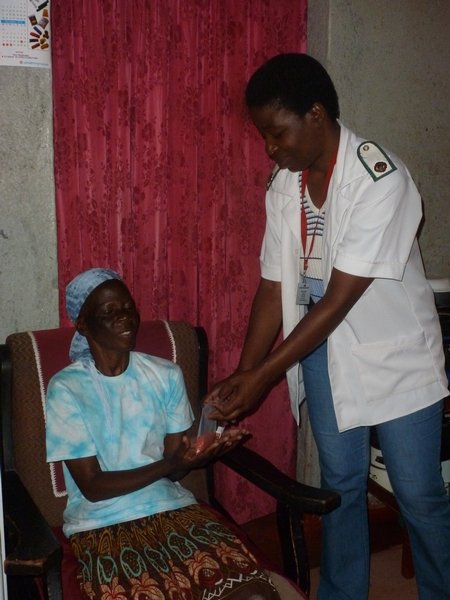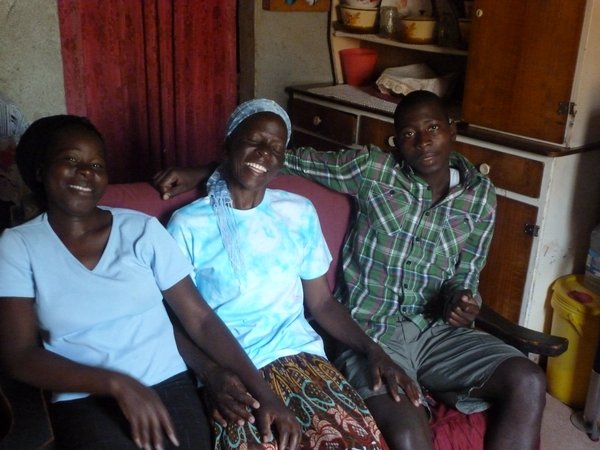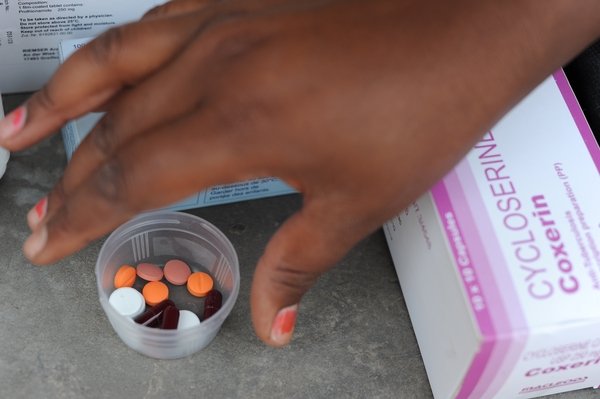Resistance strains our patience



Mar 14, 2013
“I felt like I had bugs crawling on the inside of my head”. The highly toxic pills and daily injections that Mary was taking made her vomit, lose her appetite and hallucinate. And it was MSF doctors who were telling her she had to keep on taking them, had to bear all those “side effects” in the hope that she would get well eventually. It took two years. But finally, Mary MARIZANI became the first MSF patient in Zimbabwe to be cured of multidrug resistant tuberculosis. “I had to pass through hell to get to heaven”.
Less than half of patients who are put on these highly complex courses of treatment involving up to 20 pills a day and 8 months of daily injections actually get better. But they will count themselves incredibly fortunate to get the chance of treatment in the first place because only one in five people around the world with the illness do. So Mary’s story from last year is distressingly rare.
TB is one of the oldest conditions known to man and has various forms of medicine. The ancient Greek ‘father’ of western medicine, Hippocrates, advised his medical students against treating it, because it was almost always deadly, and a dead patient was bad for business. But when antibiotics were discovered in the 20th century, they were hailed as the final death sentence of TB. The prediction was that it would be extinct by 2010.
But of course bacteria are brilliant evolutionary creatures and they soon started to outsmart the weapons used against them. So now the TB organisms have turned the tables and the resistant strains are creating a new emergency with over 600,000 people identified as suffering from this fatal disease.
MSF is on the front line of the war because in many of the places we choose to work, with the poorest people and the least developed health systems, multidrug resistant TB (MDR-TB) is particularly deadly. Diagnosis is difficult, lengthy and expensive. The two year treatment can cost nearly 500 times more than that for standard TB. Where does a country like Myanmar find US$ 6,000 for every new case? And MSF can reach and treat only a tiny fraction of those who need help.
So MSF is focusing on the bigger picture now. At the same time as expanding our treatment programmes, we are trying to stimulate new thinking about research and development of new methods for diagnosis and simpler, shorter, cheaper cures that stand a chance of making a difference in places like Myanmar or Swaziland or India.
Right at the end of last year, the first new drug to become available against TB for 50 years was approved in the US. A second is expected to come on line this year, and others are in the pipeline. They represent an unprecedented opportunity to improve the hit and miss treatment that has existed up to now. More research is urgently needed to find the best combination of pills to suit the needs of patients. It must be shorter, more effective, less toxic, and without injections. Drug manufacturers must make new drugs available for research, and ensure they are affordable. And high burden countries should lay plans to register the drugs and expand current access to care.
Rushing at the world in the other direction are the threats of multiplying numbers of cases, and of drug resistant strains that are increasingly passed from person to person, as opposed to being acquired by developing resistance to a course of the old drugs. So the imperative for urgent, global action on MDR-TB is more and more obvious.
For people like Mary in Zimbabwe, the change can’t come fast enough. While she felt the bugs crawling inside her head, the massive stigma around TB meant that many people gave her up for dead. “Most of my family deserted me for two years while I was on MDR-TB treatment,” Mary recalls. “My own relatives didn’t come to visit me when I was on death’s doorstep. The only family I had left was MSF and my two children.”
Less than half of patients who are put on these highly complex courses of treatment involving up to 20 pills a day and 8 months of daily injections actually get better. But they will count themselves incredibly fortunate to get the chance of treatment in the first place because only one in five people around the world with the illness do. So Mary’s story from last year is distressingly rare.
TB is one of the oldest conditions known to man and has various forms of medicine. The ancient Greek ‘father’ of western medicine, Hippocrates, advised his medical students against treating it, because it was almost always deadly, and a dead patient was bad for business. But when antibiotics were discovered in the 20th century, they were hailed as the final death sentence of TB. The prediction was that it would be extinct by 2010.
But of course bacteria are brilliant evolutionary creatures and they soon started to outsmart the weapons used against them. So now the TB organisms have turned the tables and the resistant strains are creating a new emergency with over 600,000 people identified as suffering from this fatal disease.
MSF is on the front line of the war because in many of the places we choose to work, with the poorest people and the least developed health systems, multidrug resistant TB (MDR-TB) is particularly deadly. Diagnosis is difficult, lengthy and expensive. The two year treatment can cost nearly 500 times more than that for standard TB. Where does a country like Myanmar find US$ 6,000 for every new case? And MSF can reach and treat only a tiny fraction of those who need help.
So MSF is focusing on the bigger picture now. At the same time as expanding our treatment programmes, we are trying to stimulate new thinking about research and development of new methods for diagnosis and simpler, shorter, cheaper cures that stand a chance of making a difference in places like Myanmar or Swaziland or India.
Right at the end of last year, the first new drug to become available against TB for 50 years was approved in the US. A second is expected to come on line this year, and others are in the pipeline. They represent an unprecedented opportunity to improve the hit and miss treatment that has existed up to now. More research is urgently needed to find the best combination of pills to suit the needs of patients. It must be shorter, more effective, less toxic, and without injections. Drug manufacturers must make new drugs available for research, and ensure they are affordable. And high burden countries should lay plans to register the drugs and expand current access to care.
Rushing at the world in the other direction are the threats of multiplying numbers of cases, and of drug resistant strains that are increasingly passed from person to person, as opposed to being acquired by developing resistance to a course of the old drugs. So the imperative for urgent, global action on MDR-TB is more and more obvious.
For people like Mary in Zimbabwe, the change can’t come fast enough. While she felt the bugs crawling inside her head, the massive stigma around TB meant that many people gave her up for dead. “Most of my family deserted me for two years while I was on MDR-TB treatment,” Mary recalls. “My own relatives didn’t come to visit me when I was on death’s doorstep. The only family I had left was MSF and my two children.”





Leave a Comment